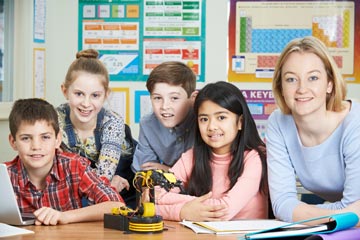The articles listed on the bottom of this page are our collection of historical research articles. They are listed on this page because their references are from before 2000 - not because they are no longer
Because they are dated, we have moved them to this page. It is important to understand that worldwide GIFTED EDUCATION RESEARCH has a long and proud history. Summary follows:
Early Foundations (19th–Early 20th Century)
- 1868: William Torrey Harris introduced the first systematic efforts in U.S. public schools to accelerate gifted learners.
- 1869: Francis Galton’s Hereditary Genius linked intelligence to heredity, influencing early gifted education thinking.
- 1901: Worcester, Massachusetts opened the first dedicated school for gifted children.
- Early programs focused on acceleration and IQ-based identification, reflecting psychometric traditions. [thegwordfilm.com], [people.uncw.edu], [hoagiesgifted.org]
Pioneering Research and Expansion (1920s–1950s)
- Lewis Terman began his landmark longitudinal study of gifted children in 1921, cementing IQ as the dominant measure.
- Leta Hollingworth published Gifted Children: Their Nature and Nurture (1926), advocating specialized instruction.
- Post-WWII, gifted education gained traction globally, but remained uneven across nations. [people.uncw.edu], [sutori.com]
Cold War and Policy Milestones (1957–1970s)
- Sputnik (1957) triggered major U.S. investment in gifted programs under the National Defense Education Act.
- 1972 Marland Report provided the first formal U.S. definition of giftedness, influencing global discourse.
- Europe responded with Recommendation 1248 (1994), affirming gifted education as a right. [people.uncw.edu], [frontiersin.org]
Broadening Conceptions (1980s–1990s)
- Theories like Gardner’s Multiple Intelligences and Renzulli’s Three-Ring Model shifted focus from IQ to multidimensional talent.
- Reports such as A Nation at Risk (1983) and National Excellence (1993) highlighted systemic gaps.
- International collaboration grew through bodies like the World Council for Gifted and Talented Children (WCGTC). [gifted.uconn.edu], [{SPAM?} F...Education | Outlook]
Globalization and Research Trends (2000s–Present)
- Increased emphasis on inclusive models and cultural equity in gifted education.
- Systematic reviews (2011–2021) show dominance of U.S.-based research but rising interest in Europe, Asia, and the Middle East.
- Emerging themes: Schoolwide Enrichment Model (SEM), technology integration, and twice-exceptionality.
- Current challenges include lack of standardized identification tools and cultural variability in definitions. [frontiersin.org], [jsser.org], [psycnet.apa.org]
Key Takeaways
Gifted education research evolved from hereditarian roots to multidimensional, culturally responsive frameworks. Today, global collaboration and technology-driven approaches dominate, but disparities in policy and identification persist.
Françoys Gagne's DMGT Model
Origins and Rationale
François Gagné introduced the DMGT in the early 1980s to address conceptual confusion between “giftedness” and “talent.” His model draws a clear distinction:
- Giftedness = natural abilities (aptitudes) in domains such as intellectual, creative, socioaffective, and sensorimotor.
- Talent = systematically developed skills and knowledge in specific fields (e.g., academics, arts, sports).
This differentiation was groundbreaking because most prior models treated the terms as synonyms. [ctaylorgif...weebly.com], [australian...upport.com], [gigers.com]
Core Components of DMGT
The model explains talent development as a dynamic process:
- Natural Abilities (Gifts) – genetically influenced aptitudes.
- Developmental Processes – learning and practice that transform gifts into talents.
- Catalysts:
- Intrapersonal: motivation, volition, personality traits.
- Environmental: family, culture, educational provisions.
- Chance – random factors influencing opportunities and outcomes.
These elements interact to determine whether potential becomes achievement. [gigers.com], [researchgate.net]
Evolution of the Model
- DMGT 1.0 (1985–2000): Established the basic dichotomy between aptitude and achievement.
- DMGT 2.0 (2007–08): Added refinements such as biological “basements” and expanded catalysts, acknowledging genetic and contextual complexity.
- Recent Updates (2020–2021): Emphasize nature–nurture interplay, role of chance, and practical applications for policy and identification. [australian...upport.com], [researchgate.net], [psycnet.apa.org]
Global Impact
- Adopted widely in Australia, Canada, and parts of Europe as a policy framework for gifted education.
- Influenced school-based planning and advocacy, including BCE’s position statement and MTSS integration.
For example, Gifted and Talented Education position statement cites DMGT as the guiding definition for giftedness and talent in Queensland schools. [Gifted and...statement | PDF] - DMGT underpins professional development initiatives such as A Day with François Gagné and advocacy agendas for talent development programs. [RE: Urgent...portunity. | Outlook], [Gagne | Outlook]
Why DMGT Matters
- Provides clarity in terminology, reducing misidentification.
- Highlights underachieving gifted learners and the importance of environmental and intrapersonal factors.
- Offers a developmental lens, shifting focus from static IQ measures to dynamic growth processes. [psycnet.apa.org], [researchgate.net]
Research Papers (pre-2000 references)
Giftedness - Judith Hewton
Don't Throw Away the Old Binet - Linda Silverman & Kathi Kearney
Traits Common to Gifted Children


